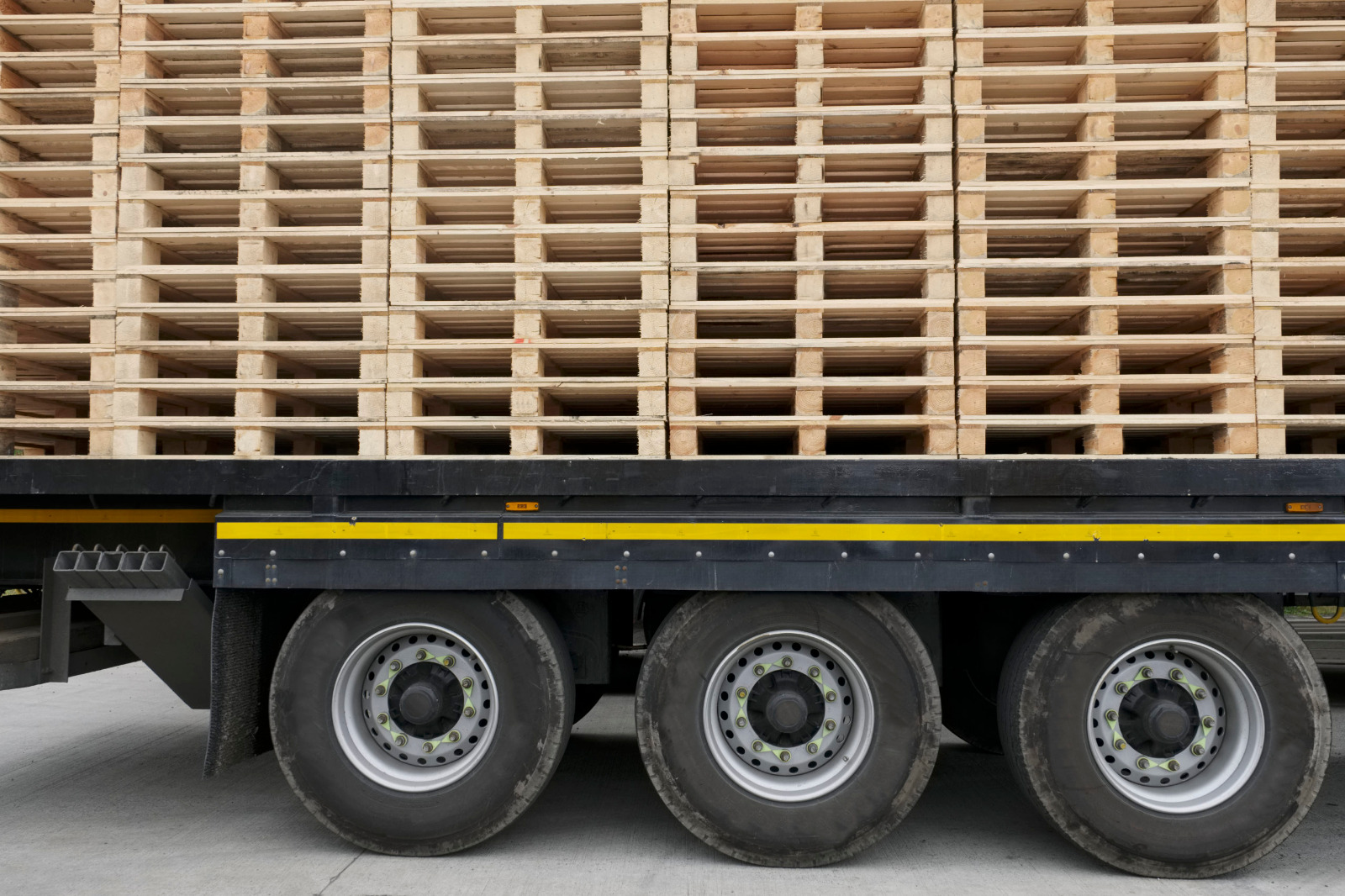 Two billion wooden pallets travel around the world. They're in the holds of tractor-trailers, carrying Honey Nut Cheerios and oysters and penicillin. They're in storage yards hidden behind supermarkets and flowing through warehouses.
Two billion wooden pallets travel around the world. They're in the holds of tractor-trailers, carrying Honey Nut Cheerios and oysters and penicillin. They're in storage yards hidden behind supermarkets and flowing through warehouses.These pallets come with an additional cost: they harbour invading insects. These pests can also cause ecological damage.
48 20 Pallets
Based on the industry, different pallet sizes are used to transport items. For example, the 48"x40" pallet that is based on GMA standards is the most popular in the consumer packaged goods industry and accounts for more than 30% of all new wood pallets manufactured every year in the United States. Its dimensions are in line with standard door widths as well as truck sizes, ensuring efficient loading and unloading procedures. It is also highly sought-after in the secondary market since it can be resold or reused to be used elsewhere, reducing waste and costs.
This size is also compatible with regional logistics infrastructure. For instance, it works well with standard racking systems and forklifts. Additionally, its rectangular shape makes the most of space on trucks and storage spaces.
There are different sizes of pallets around the world. One of them is the euro block pallet. It's an 800 mm x 1200 mm dimension that is used in Europe. This pallet size is a reflection of the fact the fact that Europe uses metric measurements, and its smaller dimensions are more compatible with European logistics systems.
A pallet's construction is also important. For heavy loads, a double-faced pallet is more stable and reduces the risk of breaking. It's also easier to place, since the operator doesn’t have to worry which side is facing up. Single-faced pallets are ideal for lighter loads but not for heavy-duty use.
While the standard dimensions of pallets are common for most industries, there are differences in other features. Certain pallets, for instance are four-way or two-way. This is the reason they can be accessed by pallet jacks or forklifts in either direction. These details are crucial for making sure that your goods and equipment are safely transported.
A specialized specification is also required when you ship chemicals. These specifications are based upon the chemical type and handling requirements. These specifications are enforced by industry associations and range from CP1 to CP9. CABKA will display a number pallets that are specifically designed to meet the requirements of different industries at the PACK EXPO including the 400 Series, a nestable, square pallet designed to maximize container use without wasting space for cargo. Other models, like the CPP 130 - a nestable lightweight pallet that is compatible with all roller- and chain-conveyor systems will also be on display.
Pallets 40'' x 40''
If you're in search of a large pallet that can accommodate multiple containers of liquid, then the 48-by-40 pallet is an excellent choice. This size of pallet is used in a range of industries that range from food to beverage, and it offers four ways to enter. This pallet is also able to accommodate a variety of different product sizes and shapes, so you're sure to find one that suits your needs.
Pallet sizes vary significantly between regions, but there is a steady movement towards standardization in the field. While different countries have their particular pallet dimensions, there are now several international standards that enable seamless cross-border logistics and trade operations. The globalization of commerce has created a demand for pallets that are standardized and can be used to accommodate different container sizes and types.
There are a variety of pallets used in the industry, but one that is often left out is the 48-by-40 pallet. These pallets are popular to transport drinks and are also utilized in the automotive and chemical industries. They offer a high load capacity and can be used in many storage facilities.
The 48-by-40 pallet is a key component in the North American food and beverage industry. Its dimensions are compatible with door and truck widths that are standard. It is ideal for shipping large quantities of items, like soda bottles or water bottles, and is easy to unload and loaded onto trucks and trailers. This pallet is popular on the second-hand market because it can be reused to reduce waste and save money.
Pallets come in different grades, but the premium grade offers the highest quality and value. The AA grade could have signs of wear. The B-grade pallets have seen some repairs, and they typically have a single stringer that has plugs made of steel that are used to mend deck boards that have cracked. These pallets can be used in most storage environments however they might not perform as well as the top-quality.
Pallets with 48''x48'' dimensions.
Every product shipped around the world begins on pallets. Pallets are vital to logistics and supply chains because they allow companies to store and ship their products in large quantities. They also provide a secure and solid platform for shipping, ensuring the integrity of products from the moment they are stored until they are placed in distribution.
There are many kinds of pallets. However, the 48"x48" pallet is the most popular size that is used by businesses. This size is ideal for storage and transporting large quantities of goods and is compatible with all shipping and warehouse equipment. The rectangular shape of this pallet is ideal for storage and is easily transported by forklifts or pallet Jacks.
Most pallets are made of wood, and they are designed to hold heavy loads without sustaining damage or collapse. They are simple to fix and are a popular option for international shipping. They are often heat-treated to meet ISPM 15 export specifications. Wood pallets can also be reused and able to be repurposed for biomass fuel at end of their useful life.
Another kind of pallet is the one with an aluminum encasement designed to carry military supplies. This kind of pallet has a double-faced design, making it more convenient to put in place than traditional stringer pallets. The double-faced design helps prevent shifting during transport, making it safer for products that are being transported.
A special kind of pallet is the automotive pallet, which is used to transport and store auto parts and components. They are usually designed for auto parts with unique sizes and shapes. In addition they are usually constructed to withstand the heavy load of these products and stop them from breaking down because of chemical corrosion.
The GMA pallet is a different type, accounting for around 30 percent of all pallets used in the United States. This pallet is 48" 40" x 48" and can hold 4,600 pounds. It is available in two-way and four-way entries that determine if pallet lift trucks or jacks are able to access the pallet from both sides.
Pallets 48'' x 50''
Pallets are portable platforms that act as a base for stacking and ship products. Most pallets are constructed of plastic or wood and designed to be lifted by material handling equipment such as forklifts and pallet jacks. Pallets play a crucial role in supply chains across the globe. They help reduce logistics costs, and help speed up distribution. Pallets are used to arrange and secure inventory, reducing the risk of product loss due to spills or damage.
Pallets made of wood are the most popular, due to their durability and cost-effectiveness. They can be repaired and reused to prolong their life and reduce the amount of waste. Plastic pallets however are more costly and are not suitable for a limited number of applications.
Pallets are available in different sizes to meet the needs of different customers. The most well-known pallet size is the 48''x40" GMA-approved pallet. These pallets are widely used in North America, as they correspond to standard door and truck sizes. They are easy to load and unload. They also are popular on the secondary market where they can be reused or sold at the end of the day.
For specialty applications, specially-designed pallets are available to transport unique products or shipments. Glass pallets, for instance are designed to transport and store bottled drinks. Can pallets, on the other hand, are designed to transport soda and beer cans. These pallets are usually made for specific purposes. a smooth top that prevents bottles and cans sliding and rolling on the trailer floor.
Chemical-resistant pallets are used to transport liquids and hazardous chemicals. These pallets are usually fabricated from treated wood to reduce the chance of contamination or corrosion. They are also often checked for structural integrity to ensure they can withstand the high-pressure loads that these products will be exposed to during transit and storage.
 It's important to select the appropriate size of pallet, regardless of whether you're shipping a whole truckload or just a portion. Pallets that are too small won't be able to hold the product and pallet prices (mouse click the up coming website page) may fall apart when weighed down over time. In the same way, if the pallets are too large they will occupy more space in your truck and may be difficult to stack. A pallet's stiffness is a different aspect to take into account, since it measures how the pallet bends out of shape when loaded with boxes.
It's important to select the appropriate size of pallet, regardless of whether you're shipping a whole truckload or just a portion. Pallets that are too small won't be able to hold the product and pallet prices (mouse click the up coming website page) may fall apart when weighed down over time. In the same way, if the pallets are too large they will occupy more space in your truck and may be difficult to stack. A pallet's stiffness is a different aspect to take into account, since it measures how the pallet bends out of shape when loaded with boxes.







